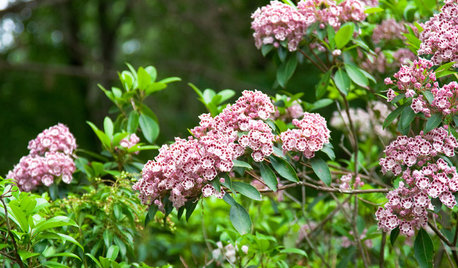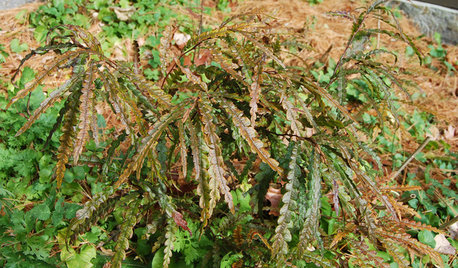Blueberry shrubs and soil pH
ericwi
13 years ago
Related Stories

EDIBLE GARDENSSummer Crop: How to Grow Blueberries
Plant blueberries in spring or fall for garden beauty through three seasons — and a sweet superfood in summer
Full Story
GARDENING GUIDESHave Acidic Soil in Your Yard? Learn to Love Gardening Anyway
Look to acid-loving plants, like conifers and rhododendrons, to help your low-pH garden thrive
Full Story
GARDENING GUIDESInvite Cellophane Bees to Your Garden by Providing Patches of Bare Soil
Look for cellophane bees (Colletes) pollinating flowering trees and shrubs in U.S. gardens this spring
Full Story
GARDENING GUIDESGreat Design Plant: Grow Blueberries for Their Fruit and More
Eastern gardeners should consider growing blueberry plants for their delicious fruits, bee-friendly spring blooms and brilliant fall foliage
Full Story
GARDENING GUIDESGrow a Beautiful Garden in Alkaline Soil
Got alkaline soil? Learn how to manage it and the many beautiful plants that will thrive in this ‘sweet’ soil
Full Story
GARDENING GUIDESGardening Solutions for Heavy Clay Soils
What’s a gardener to do with soil that’s easily compacted and has poor drainage? Find out here
Full Story
GARDENING GUIDESHow to Stop Worrying and Start Loving Clay Soil
Clay has many more benefits than you might imagine
Full Story
FLOWERS AND PLANTSKalmia Latifolia’s Origami-Like Flowers Shine in the Shade
This shade-tolerant shrub, also known as mountain laurel or calico shrub, thrives in East Coast woodland gardens
Full Story
GARDENING GUIDESGreat Design Plant: Comptonia Peregrina
Though not a fern, sweet fern sure smells sweet and thrives in tough spots where many shrubs and ferns cannot
Full Story
GARDENING GUIDESGarden Myths to Debunk as You Dig This Fall and Rest Over Winter
Termites hate wood mulch, don’t amend soil for trees, avoid gravel in planters — and more nuggets of garden wisdom
Full StorySponsored
Columbus Area's Luxury Design Build Firm | 17x Best of Houzz Winner!
More Discussions






jolj
berryman135678
Related Professionals
Rancho Cordova Landscape Architects & Landscape Designers · Allentown Landscape Contractors · Cedar Hill Landscape Contractors · Davidson Landscape Contractors · Ellensburg Landscape Contractors · Kerman Landscape Contractors · Mashpee Landscape Contractors · Mason Landscape Contractors · Methuen Landscape Contractors · Smyrna Landscape Contractors · Forest Hill Landscape Contractors · Sun Valley Landscape Contractors · Livingston Decks, Patios & Outdoor Enclosures · Orland Park Decks, Patios & Outdoor Enclosures · Springfield Decks, Patios & Outdoor EnclosuresericwiOriginal Author
ericwiOriginal Author
berryman135678
soilbuilder
ericwiOriginal Author
doublejack
ericwiOriginal Author
wayne_5 zone 6a Central Indiana